
College What It Was, Is, and Should Be By Andrew Delbanco
“The liberal arts are the arts of freedom. To be free a man must understand the tradition in which he lives. A great book is one which yields up through the liberal arts a clear and important understanding of our tradition. An education which consisted of the liberal arts as understood through great books and of great books understood through the liberal arts…It must follow that if we want to educate our students for freedom, we must educate them in the liberal arts and in the great books.â€
“The college graduate is presented with a sheepskin to cover his intellectual nakedness.â€
College
What It Was, Is, and Should Be
By Andrew Delbanco
Erudite is an apt description of this book. It is replete with citations from scholars, past and present, along with ample references to the tradition in which they are rooted. But erudite fails to convey the passion with which the author defends that tradition.
As the subtitle promises, Delbanco traces the development of colleges in the American colonies. He begins in1636 when Puritan emigrants established a New England college and named it after its benefactor, John Harvard. A fund appeal to prospective donors in England said the college would “advance learning and perpetuate it to posterity.â€
Along with theology, students studied logic and ethics –classical and Christian –– as well as arithmetic and geometry. The college was to “develop the whole man — his body and soul as well as his intellect.†Americans saw no conflict between religion and science, but considered them part of the unified whole of God’s creation.
In the early American college, since all studies were unified as one integrated study of the divine mind, boundaries between ‘fields’ or ‘disciplines’ did not exist. ‘There is not one truth in religion, another in mathematics, and a third in physics and art,’ as one Harvard graduate (class of 1825) put the matter, ‘there is one truth, even as one God.’
Daniel Walker Howe, in “What Hath God Wrought,†(reviewed here) wrote that technological advances during the early 19th century transformed America. Later, technology on steroids generated a call for formal career preparation and transformed American higher education. Relativism also affected academia; disputing the very idea that truth existed or that seeking it is a legitimate aim of education.
Delbanco does not deny the other realities that overtook the old college model  – globalization; economic instability; the ongoing revolution in information technology; the increasingly evident inadequacy of K-12 education, to mention a few.
With or without the consent of all its constituents, the pace of change, begun in the antebellum years, accelerated. The number of elective courses in specialized subjects multiplied…instruction was increasingly organized through academic departments rather than controlled by the president or a coterie of faculty elders.
But most important of all, in the author’s view, was “the collapse of consensus about what students should know.†He observes that although a college education is more and more in demand, there is less and less agreement about what it should be.
Delbanco borrows a character from a John Updike novel to express what college was once understood to teach; “science, art, history… the story of mankind… of civilization. How we got here. What now?â€
Only a few small liberal arts colleges offer anything resembling that description. In the vast majority of colleges “the course catalog is likely to be somewhere between an encyclopedia and the proverbial Chinese menu – from which students choose a little of this and a little of that, unless they are majoring in one of the ‘hard’ sciences, in which case their range of choice is much narrower.â€
Delbanco writes, “Students deserve something more from college than semi-supervised fun or the services of an employment agency.†Anyone who earns a BA from a reputable college, he reasons, ought to understand something about the historical processes that shaped both the Western tradition and alternative ideas outside of it.
The author invokes arguments most famously advanced by Thomas Jefferson and John Adams: If the new republic was to endure, it required an educated citizenry. Or as a professor of moral philosophy explained to his class 100 years ago:
Nothing that you learn in the course of your studies will be of the slightest possible use to you in after life — save only this— that if you work hard and intelligently you should be able to detect when a man is talking rot, and that, in my view, is the main, if not the sole purpose of education.
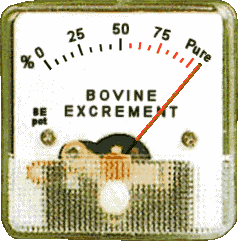 Translated into modern usage by Delbanco: “…we might say the most important thing one can acquire in college is a well-functioning bullshit meter. It is a technology that will never become obsolete.â€
Translated into modern usage by Delbanco: “…we might say the most important thing one can acquire in college is a well-functioning bullshit meter. It is a technology that will never become obsolete.â€
Even after the early colleges gave way to the modern university, promotional materials still promised to combine the acquisition of knowledge with the development of character. But the trend of early specialization was underway and would not be deterred. Students now attend college to obtain the credential that will launch their careers. What remains of the liberal arts or core curriculum is relegated to the first two years of undergraduate education.
The traditional idea of a four-year college as a time for students to explore the human experience through the best writers and historians has mostly disappeared. Population growth along with advances in science and technology fragmented the curriculum and marginalized the humanities. It did not, however, eliminate the need for them.
Science… tells us nothing about how to shape a life or how to face death, about the meaning of love or the scope of responsibility. It not only fails to answer such questions; it cannot ask them. As much as the questions posed by science, these are hard and serious questions, and should be part of every college education … Such questions do not admit of verifiable or replicable answers because the experiment to which we must subject them is the experiment of our own lives.
Delanco’s writing is elegant and lively, as would be expected of a professor of English literature and a prolific author. He explains what college was and combines that exposition with a spirited defense of the humanities. However, when he addresses what education is and should be, his book falls short of this reviewer’s expectations.
Except for a few oblique references he ignores the politicization of the college curriculum. Yet, a politically biased curriculum is antithetical to the liberal arts education the author champions. The absence of coursework requirements in American history and institutions, both vital to sustaining democracy, is barely mentioned. These are glaring omissions in a book that defends the value of a liberal education and sets forth the consequences of its loss. It’s not as though the ideological tainting of the college curriculum is a secret. It is widely discussed and researched.
A recent study conducted by The National Association of Scholars’ (NAS) described the dimensions of the problem.1.
In recent years, study after study has found that a college education no longer does what it should do and once did…The findings of these studies match all too well the specific complaints that are now commonly heard about the manifestations of a politicized higher education; that requirements for coursework in American history and institutions have been dropped, that writing courses often stress writing far less than tendentious political topics; that prescribed books are frequently no more than journalistic presentations of a simple political message instead of the more complex writings appropriate to an academic context; and that faculty teach what to think rather than how to think: that is, they demand correct attitudes and beliefs of students more than they require independent reading and thought.
Students cannot develop “a well-functioning bullshit meter†when so much of what they are taught fits the definition of what they are supposed to detect.
When individual faculty members and sometimes even whole departments decide that their aim is to advance social justice as they understand it rather than to teach the subject that they were hired to teach with all the analytical skill they can muster, the quality of teaching and research is compromised. (NAS)
Delbanco’s treatment of what college should be is also troubling. He presents no real proposals to restore the objectives he values. Instead he falls back on the typical educator grouse about rising costs and the need for more student aid. He condemns merit-based scholarships because they favor advantaged students over those disadvantaged by income inequality. He wants elite institutions to provide more remedial help for the latter. Everyone, he writes, should have equal access to a college education, regardless of academic preparation, because it is essential to the preservation of democracy.
Thus does he leap from the present system to the one he champions with no road map as to how to get there. By doing so he invalidates his argument about college and the preservation of democracy.
The Intercollegiate Studies Institute administered two exams (2006 and 2007) of 14,000-college freshman and seniors’ basic knowledge of American heritage. The students failed both years.
The average freshman scored 51.7% the first year and 51.4% the next. The average senior scored 53.2%, then 54.2%. After all the time, effort, and money spent on college, students emerge no better off in understanding the fundamental features of American self-government.
As to the author’s recommendation for more government aid, it is appropriate to defer to another academic, one who seems much more attuned to the political and economic realities of higher education; Professor of Economics at Ohio University, Richard Vedder: 2.
… .Federal student grant and loan programs have contributed to the tuition price explosion. When third parties pay a large part of the bill, at least temporarily, the customer’s demand for service rises and he is not as sensitive to price as he would be if he were paying himself. Colleges and universities take advantage of that to raise their prices to capture funds that ostensibly are designed to help students.
Nor does this money necessarily improve instructional quality. According to a report from the National Association of Trustees and Alumni: 3. in the five-year period ending in 2008, nine of the Big 12 Schools increased spending on administration (non-instructional staff) by an average of 59 percent.
Vedder also points out that increases in federal aid programs have produced a much larger number of college graduates than the managerial, technical and professional jobs available.
Connected to this is the fact that more and more kids are going to college who lack the cognitive skills, the discipline, the academic preparation, or the ambition to succeed academically.
In fact, many students either do not graduate or don’t graduate on time. Vedder estimates that roughly 40 percent of full-time, first-year students receiving Pell Grants graduate within six years (from four-year institutions). This is significantly lower than the graduation rate of non-Pell recipients, which appears to be closer to 60 to 65 percent.
In fact, federal largess contributes to the deficiencies that Delbanco deplores. In response to the influx of poorly prepared students, colleges lowered standards, inflated grades and introduced a plethora of undemanding courses of dubious academic or practical value.
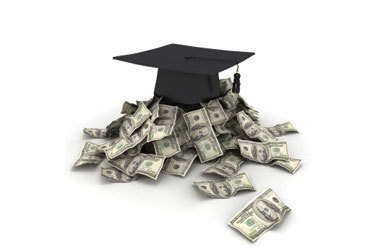 Throwing more money at higher education or increasing loan programs will not solve the problem of the scatter-shot curriculum the author condemns in his book. It has persisted and arguably grown worse despite persistent nationwide increases in tuition and fees at four-year public colleges: 21 percent more in 2009-10 than in 2004-05, even after adjusting for inflation.
Throwing more money at higher education or increasing loan programs will not solve the problem of the scatter-shot curriculum the author condemns in his book. It has persisted and arguably grown worse despite persistent nationwide increases in tuition and fees at four-year public colleges: 21 percent more in 2009-10 than in 2004-05, even after adjusting for inflation.
Are students getting commensurate value?
Academically Adrift,â€4. measured the problem solving skills of 2,300 college freshmen when they entered college and again two years later. Researchers found that “nearly half of the students did not improve their skills in critical thinking, analytical reasoning, writing or problem solving during the first two years at all.”
Delbanco’s concern about the neglect of the core curriculum is justified. It is those courses that develop discernment in personal and public life, forge a common intellectual background and supply the knowledge necessary for responsible citizenship. But his recommendations will not restore them. They will only result in a greater number of students paying Filet Mignon prices for a Chinese Menu.
1. “A Crisis of Confidence, The Corrupting Effect of Political Activism in the University of California,†April 2012
2. “Federal Student Aid and the Law of Unintended Consequencesâ€Â Hillsdale College’s Imprimis<s/small>
3. “What’s Happening of the Field?†GoActa.org
4. “Academically Adrift “ by Richard Arum of New York University and Josipa Roksa of the University of Virginia
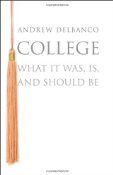

 The posts are coming!
The posts are coming!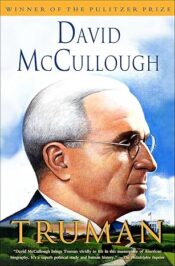
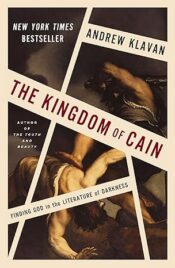

1 comment
Great article! Many of the things you described I am now a living example. I goofed around after high school and squandered my chance to graduate from college back in 98. Fast forward to a more mature self, I am now about to finish my degree in a month.
Although, now I am very concerned about what kind of job I can get with my degree. I am thankful for the government financial aid in the form of grants, and low interest loans.
However, as your article explains very clearly, this effect has produced an excess of college grads on a market that has been in the worst recession since the depression.
Now the effect seems to have been the “watering down” of a college degree. Decades of the old maxim that getting a college degree is necessary on the path to the American dream, I think has lead us down this path.
Every parent in the past, and today, still tell their children this. However, better advice might be to go to a technical school, which seems to have a huge need for more specific skills.
[Reply]
Leave a Comment